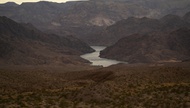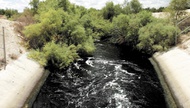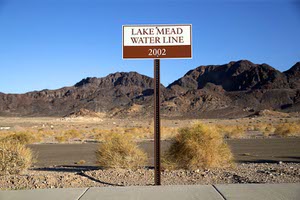As the Southwestern drought continues to take its toll on Lake Mead, ominous strips of pale rock aren’t the only hidden pieces of its past to emerge. A concrete plant, the abandoned Mormon enclave of St. Thomas and a Boeing B-29 superfortress bomber are among the historical relics long obscured by the lake’s surface that are enjoying renewed visibility—and renewed interest from tourists.
Officials at Lake Mead National Recreation Area have reported that visitation was up 47 percent from last spring and is up 30 percent so far this summer. The lake has dropped 151 feet over the past 17 years -- much of that recently -- placing the Batch concrete processing plant used in the dam’s construction 50 feet above the water; it was once only accessible by divers. St. Thomas, meanwhile, began to reappear around ten years ago and has become a popular hiking destination, prompting park officials to put out a call this year for photos, documents and oral histories of the town to help piece together its reemerging past. The Bureau of Reclamation estimates that new parts of the ghost town could continue to surface for the next 50 years.
The lake’s most recent drought-related comeback is the World War II-era bomber. The massive plane crashed during a test flight in 1948 and for years remained a mystery under 260 feet of water. Today, it’s just 120 feet down, prompting the National Park Service to give the all-clear to reopen the wreckage to divers. More light and proximity to the surface has meant curious visitors need less technical training to take a peek, giving recreational divers unprecedented access. Scuba Training and Technology, the only company permitted to tour the well-preserved wreckage, reports an uptick in business, though the success is bittersweet.
While larger crowds and hidden gems from the past help bring much-needed attention to the impact of the drought, they are ultimately reminders of the harsh reality that there may not be much left for us to visit in the future.








